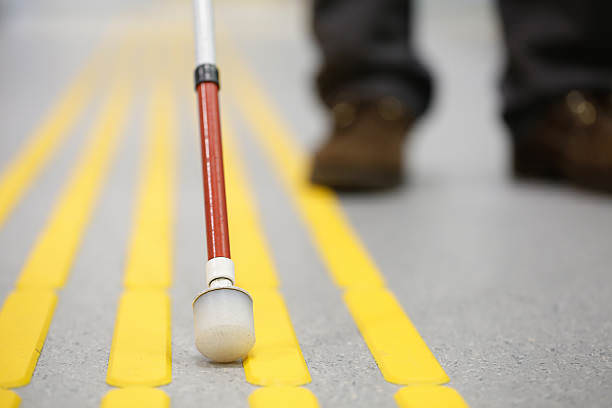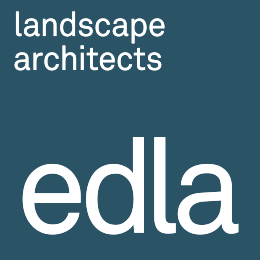
It’s time to see things differently
American Activist and entrepreneur Eli Pariser said, “To be a good citizen, it’s important to be able to put yourself in other people’s shoes and see the big picture. If everything you see is rooted in your identity, that becomes difficult or impossible.”
This is no more important than when designing public realm spaces, which will be used by all sections of the community, able and non-able body, sighted and non-sighted. The leading charity for the visually impaired, the RNIB, states there are near, ‘2 million people in the UK live with sight loss and this is predicted to increase to 4 million by 2050’.
It goes without saying, that all of our community needs to be able to navigate and safely access all the amenities and public areas. But this is not the case for a number of reasons.
Recently, the EDLA team was privileged to receive a talk from Consultant Matt Datson, on his experience navigating space and public transport as a severely visually impaired person. His perspective was based on his hometown of London, but universally applicable.
One of the observations that most resonated was the disclosure that Matt avoided many large and familiar public areas, such as Kings Cross Station or Oxford Street. Any noisy or busy areas where there is not a clear designated path for him to follow, or where he cannot hear enough to get his bearings, is a huge challenge for him.
Matt offered some helpful insight into design features on what makes that experience easier and what doesn’t.
Design features that Matt felt were useful and relatively common:
- Tactile paving at intersections between different surface uses (e.g. between paving and road)
- Audio on buses and trains informing him of which stop he is at
- Tactile paving or high visibility strips at the top and bottom of stairs.
On the other hand, the following things are not as common, but which would be really helpful.
- Distance markings with tactile paving. He often uses geographic or paving markers to understand where he is on our journey, as sighted people would use landmarks.
- Key routes marked with tactile paving or an edge for him to align his white cane to
- Curbing or grooves designating a clear pedestrian path from cycle lanes of roads. This is one of his biggest concerns because unlike cars, he cannot hear cyclists approaching.
However, there are spaces that Matt said he felt unsafe/are difficult for him to navigate and therefore he avoids.
These include large open spaces with few distinguishable features to navigate by and pavements that are of poor quality or where there are obstacles such as bins which he can trip over. He mentioned that residential pavements are particularly hard to navigate on bin days, and he has had falls over rubbish bags and bins where they are unexpected on his routine route.
Is it acceptable in modern Britain, for a huge cross-section of the community, including the elderly, to not use areas of our cities, because they do not feel safe to use? Primarily because the space does not facilitate their needs.
Simply, no. We believe as designers of space; we have a responsibility to be taking cognisance of the needs of people with a visual and/or mobility impairment in our thinking when creating proposals for new projects.
The key takeaways our team took away from Matt’s talk included:
- The haptic nature of paving is crucial for visually impaired people to navigate their space
- On busy travel routes, having clear designations for cyclists and pedestrians can help visually impaired people feel safer when they are walking.
- Audio cues are a particularly effective tool for transport for visually impaired people.
- A combination of apps, physical elements in the built environment, and well-trained staff are all key to creating the best experience for visually impaired people moving through space.
Some interesting work being done in this field include the ‘Feel the View’ car window by Italian Innovators, ‘Aedo’, which translates landscapes onto a tactile display and lets blind people ‘see’ the landscape along the journey. The company has come up with software that will translate the view of the landscape onto a tactile panel, which the user can then feel and hear to experience.
How can Landscape Architects use software to help people ‘see the space’ of their surroundings better?
Matt’s talk was interesting on many levels, but it was his last comment that left a lingering note. Matt asks that sighted people or able-bodied people approach disability with more openness and ask questions. He wants people to see him as a ‘person’ first, before seeing his disability.
Perhaps we all need some help sometimes to see things clearly.
If you are interested in booking a session with Matt Datson, please contact Jo on office@edla.co.uk and she will put you in touch.
